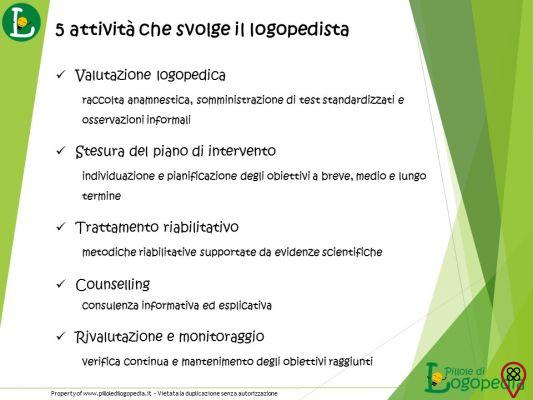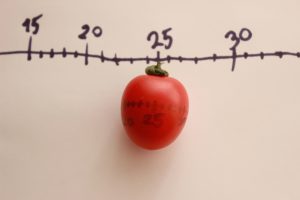During literacy, some children have learning difficulties. They omit, add, change and invert letters and syllables. They cannot interpret texts and take time to memorize the multiplication table. Some adults take a long time to read a book, even if it has few pages, and they resist writing messages. Such difficulties are classic signs of dyslexia. From the Greek dys- disorder, lexis- word, it is a genetic and hereditary language disorder. It hinders the ability to learn to read and write and to understand texts. Patients with this disorder may not be able to establish phonemic memory, that is, make the association of phonemes with letters. According to data from the Spanish Association of Dyslexia, the disorder affects 0,5 to 1,7 of the world population. The incidence is higher in men, for every 4 men, one woman has dyslexia.
types of dyslexia
Acquired Dyslexia: Difficulties in reading and writing are explained by the deterioration of the areas of the brain responsible for these activities;
Surface Dyslexia: Errors of omission, substitution and addition of letters. Patients with this type of dyslexia have greater difficulty with spelling, as they are guided by auditory information;
Auditory Dyslexia or Dysphonetic: The absence of sound perception leads to difficulties in speech, errors in reading due to difficulties with graphene-phonemes. People with auditory dyslexia also make mistakes in writing, because they change syllables;
Visual Dyslexia or Dyseidetic: It causes difficulties in differentiating the right and left sides, spelling errors and reading errors caused by poor visualization of words;
Phonological Dyslexia: In this type of dyslexia, the carrier makes a visual reading of words. They are observed globally. The person with phonological dyslexia can read “house” instead of “case”, that is, the person guesses the word instead of reading it. The most common errors in phonology dyslexia are:
- omissions of letters-syllables-words: key/cave
- confusions nas letters: db, pq, bg, un, gp, dp
- inventions of words: and from what
- inversions in the letters-syllables: father/pia
- Replacement of words
- spellings in new or unfamiliar words
- hesitations in the unknown words
- Reiterations of syllables-words: kitchen/kitchen
Profound Dyslexia or Mr: Union of two or more types. Visual and auditory difficulties at the same time, which leads to visual, semantic errors or paralexia (confusing “happy” with “Christmas”).
Causes
- Neurobiological origin – chromosomal alteration transmitted by a gene from a small branch of chromosome 6, which makes dyslexia highly hereditary;
- Brain changes – malfunction, delay in the maturation of the central nervous system, or failure of communication between neurons, which makes coordination functions difficult;
- Excessive production of testosterone during pregnancy is also pointed out as what would justify the higher incidence in men;
- Diseases such as encephalopathies;
- Disturbances in childbirth or early life;
- Severe malnutrition – in the first years of life it can affect the central nervous system, compromising the child's learning and general development;
How does dyslexia act on the brain?
According to neuroscientists at Georgetown University Medical Center (United States), the brain anatomy of men and women with dyslexia is different. The study is the first to compare the brains of men and women with and without the disorder. The research results were published in the journal Brain Structure and Function.
The research points out that women are not taken into account in studies on the subject, because the highest incidence of dyslexia is in men.
In men, the least amount of gray matter is found in areas of the brain linked to language processing. In women, the smallest volume of gray matter is in the areas responsible for sensory and motor processing.
Diagnosis
The diagnosis is made by a multidisciplinary team (doctor, psychologist, psychopedagogist, speech therapist and neurologist). Dyslexia is confirmed after excluding visual and hearing impairments, inadequate schooling, attention deficit, socioeconomic and emotional problems.
The earlier the diagnosis, the more efficient the treatment and the patient will learn to deal with their difficulties.
Treatment
Learning and attention disorders are caused by the absence of certain neurotransmitters, says psychologist and neuropsychologist Edyleine Benzik. The psychiatrist also clarifies that the medication replaces the absent substances.
dyslexia in children
 It appears at the end of literacy and at the beginning of school life. As many education and health professionals have little or no knowledge about dyslexia, they associate writing failures and difficulty with laziness or disinterest. However, Clélia Estill, speech therapist and psychopedagogist at the National Dyslexia Association reports that not all learning difficulties are dyslexia. In the school environment, it is up to the teacher to have the sensitivity to perceive that something is not right. It is up to him to present the case to the pedagogical coordination and, mainly, to the parents.
It appears at the end of literacy and at the beginning of school life. As many education and health professionals have little or no knowledge about dyslexia, they associate writing failures and difficulty with laziness or disinterest. However, Clélia Estill, speech therapist and psychopedagogist at the National Dyslexia Association reports that not all learning difficulties are dyslexia. In the school environment, it is up to the teacher to have the sensitivity to perceive that something is not right. It is up to him to present the case to the pedagogical coordination and, mainly, to the parents.
Symptoms
From 3 to 6 years
- Talk like a baby;
- Difficulty recognizing the letters that make up your name;
- Difficulty remembering letter names, n
numbers and days of the week;
From 6 to 7 years
- Difficulty in syllabic division;
- Cannot read monosyllabic words;
- Memorizes texts without understanding them;
- Complains that reading is too difficult.
From 7 to 12 years
- Constant reading errors and difficulty interpreting texts;
- Uses vague words like “thing”;
- Disorganization at school and at home;
- Difficulty in dictation and copying;
- Cannot finish the tests;
- Fear of reading aloud;
- Difficulty following verbal and printed instructions;
- Conduct problems for not being able to carry out school activities;
- Immaturity and self-esteem issues.
12 years on
- Careless, cluttered and incomprehensible writing;
- Confusing verbal instructions and sequences, such as telephone numbers;
- Interruption of activities;
- Difficulty learning languages;
- low esteem
Childhood dyslexia and depression
The lack of professional monitoring and family support leaves children more exposed to the dangers of depression, according to research carried out by neuropsychologist Ricardo Franco de Lima, from Unicamp. Dyslexic children feel inferior to others because they cannot perform activities. As dyslexia has no cure, this neglect will result in an adult with even greater learning difficulties and feelings of inferiority.
Treatment
For some doctors dyslexia and other learning disorders in children can be treated without medication. According to pediatrician Maria Aparecida Moysés, professor at the Faculty of Medical Sciences at the State University of Campinas (Unicamp), drugs can cause dependence, as amphetamines are the active ingredient in all drugs used in these types of disorders. Amphetamines cause a feeling of pleasure. The pediatrician reports that young people aged between 18 and 20 have difficulties in abandoning treatment. Also according to the pediatrician, children with learning disorders treated with medication have sleep disorders and act like “zombies”. Maria Aparecida ends her analysis by saying that drug intervention can alter sex and growth hormones.
Complementary treatments
Children with phonological difficulties should undergo training to recognize phoneme changes. FAST FORWARD is a computer program used on a commercial scale in the United States. Speech therapy in cabin is another important resource for the treatment of dyslexics with alterations in the auditory process.
The teacher's role in the treatment of dyslexic children
The teacher has an important role in the daily life of dyslexic children. Together with the school's pedagogical team, they will be responsible for creating a favorable environment for teaching. Check what the teacher's behavior should be:
- Respect the student's rhythm;
- Individualize teaching, dividing the subject into several parts;
- Repeat the information as many times as necessary;
- Highlight successes and praise them;
- Prioritize oral assessment;
- Correct grammatical content (knowledge and not spelling);
- Allow the student to relate school learning with previous experiences;
- Homework not very extensive;
dyslexia in adults
Difficulties in speaking, writing and understanding will continue into adulthood if the dyslexic child does not receive professional follow-up and family support. The difficulties persist, as well as the bad jokes. The low self-esteem of a dyslexic adult will increase their shyness, putting their family, friends and love relationships at risk. For this reason, the consumption of licit and illicit drugs is common to chase away the anguish and personal demands of some family members and friends for not being able to perform simple tasks. At first, drugs bring comfort, however, it is a temporary exit, because the negative feelings return as soon as the effect wears off. Dependence is everything the dyslexic does not need, hence the importance of observing behavior and seeking information to help.
Symptoms of dyslexia in adults
- They cannot relate;
- Difficulty distinguishing right and left;
- Committed writing and reading. Dyslexic adults are slow to finish reading a book;
- Skip the endings of words in reading;
- Difficulty in learning languages;
- Immediate memory impaired;
- Difficulty spelling;
- Difficulty managing time;
- Difficulty naming objects and people;
- They are reluctant to write;
- Sequence problems;
- They confuse telephone messages;
Dyslexic adult and school life
Entrance Examination
The writing, interpretation of texts and the enormous statements are already terrifying for those who do not have dyslexia. Imagine who has it. Dyslexics may request extra time to complete the test. The Permanent Commission for Entrance Examinations of the State University of Campinas (Comvest/Unicamp) is evaluating this request. If accepted, the student has two more hours and takes the test elsewhere, with the help of a monitor who reads the questions. The student can use a calculator and mentally prepare the essay and dictate to the monitor to transcribe.
University education
 It is perfectly possible for a dyslexic to succeed in Higher Education, provided that some measures are taken:
It is perfectly possible for a dyslexic to succeed in Higher Education, provided that some measures are taken:
- Use various ways to present content: videos, slideshow;
- Have a summary of the lesson to familiarize the student with the subject. This abstract must have keywords;
- Give examples to illustrate a subject and supplementary texts. These materials must not have backgrounds with images, in Arial or Comic Sans fonts and without very long paragraphs;
- The student can print the support material with paper of another color. Some use colored acetates that they place over the text for easier reading;
- The teacher needs to ask the student if he is able to keep up;
- Taking regular breaks;
- Assessment questions should be objective;
- Teacher needs to agree with this student assignment due dates;
facts about dyslexia
Dyslexics have a more developed right-lateral cerebral hemisphere. According to scholars, this characteristic explains the enormous potential for the arts, athletics, mechanics and creativity in problem solving, in addition to intuitive skills. The world has seen and is seeing great dyslexic scientists, writers, actors, politicians and athletes. Check out how they managed to overcome the difficulties:
Albert Einstein- scientist: The greatest scientist of all time said, "When I read, I only heard what I was reading, and was unable to remember the visual appearance of the word I was reading."
Thomas Alva Edison - inventor: The greatest inventor of all time and his relationship to dyslexia: “The most satisfying form of ecstasy is to think, think and think”.
Hans Christian Andersen – Danish writer: The author of the book “The Ugly Duckling” was never able to write and spell in his native language.
Agatha Christie- writer: The British writer, author of the book “Murder on the Orient Express” has always recognized her limitations: “I myself have always recognized myself as the 'slowest' in the family. This was entirely true and I knew it and accepted it.”
Whopppi Goldberg - actress: The “The Color Purple” star reports, “My memories of school are not my favorite things. We are not stupid – we have a disability and that disability can be overcome.”
Danny Glover - actor: The “Lethal Weapon” star reveals the double prejudice, racial and dyslexic: “Kids made fun of me because of my black skin, my big nose, and because I was dyslexic. As an actor, it took a long time for me to understand why the words seemed mixed up in my mind and I pronounced them differently.”
Winston Churchill – politician: The English leader tells the danger of discrimination: “I was totally discouraged in everything, in my school days. “And nothing is more discouraging than being marginalized in the classroom, which leads to feeling inferior in our human origins.”
Magic Johnson – basketball player: The greatest basketball player of all time tells of his desire to overcome: “I wanted to show everyone that I could do my best, but also that I was capable of reading”.
If you detect any problems with your child's school performance, seek guidance from the school. Do not hesitate to take him to the psychologist, psychiatrist and neurologist. Once dyslexia is diagnosed, follow the treatment to the letter. With professional support, family and friends, the dyslexic child can have quality of life, thus becoming a successful adult in their studies and in their relationships.
- Text written by Sumaia Santana from the Eu Sem Fronteiras Team.

























